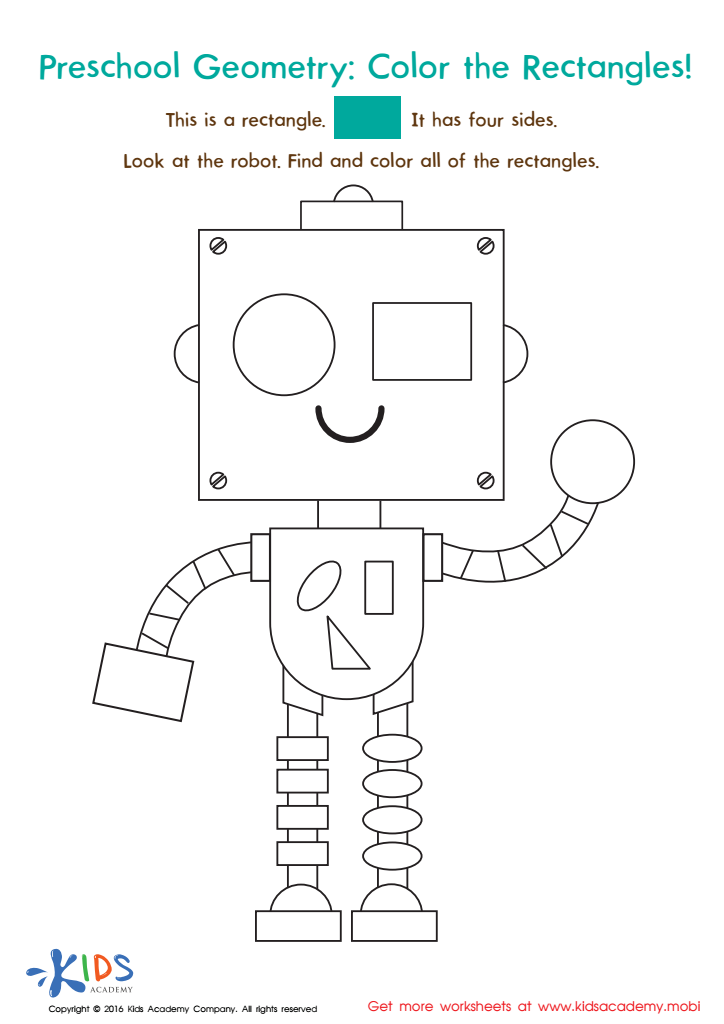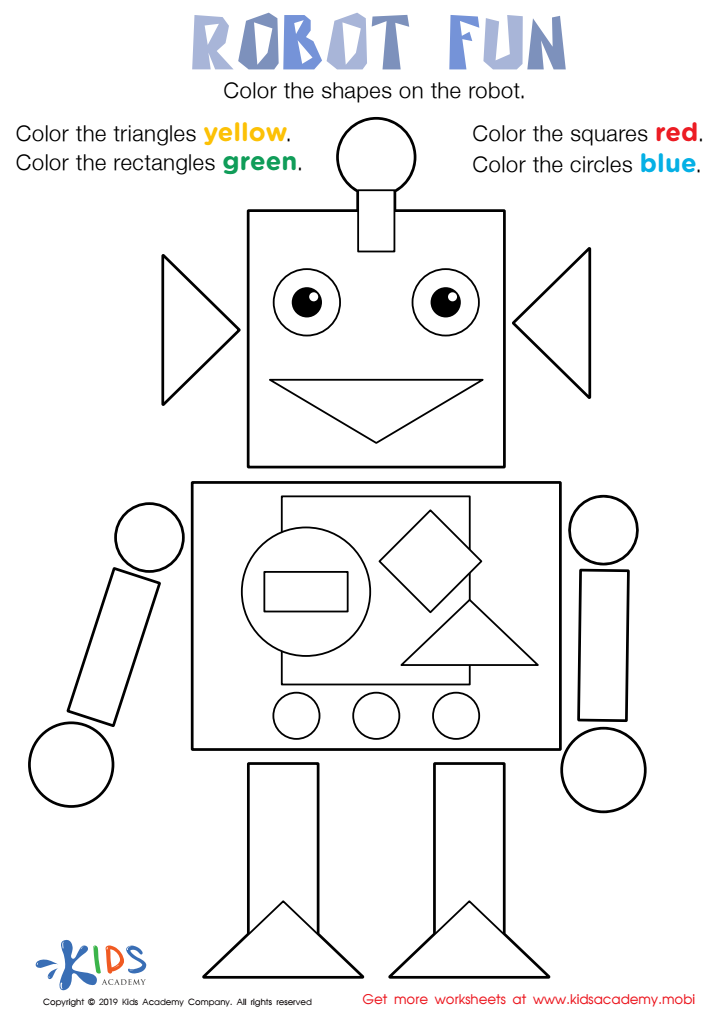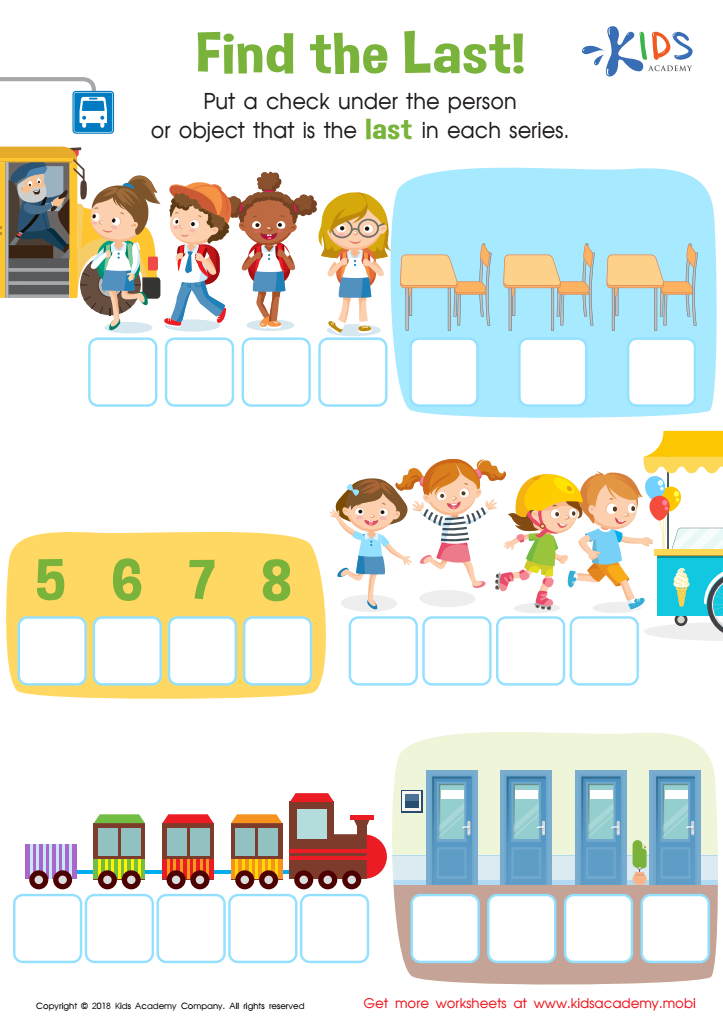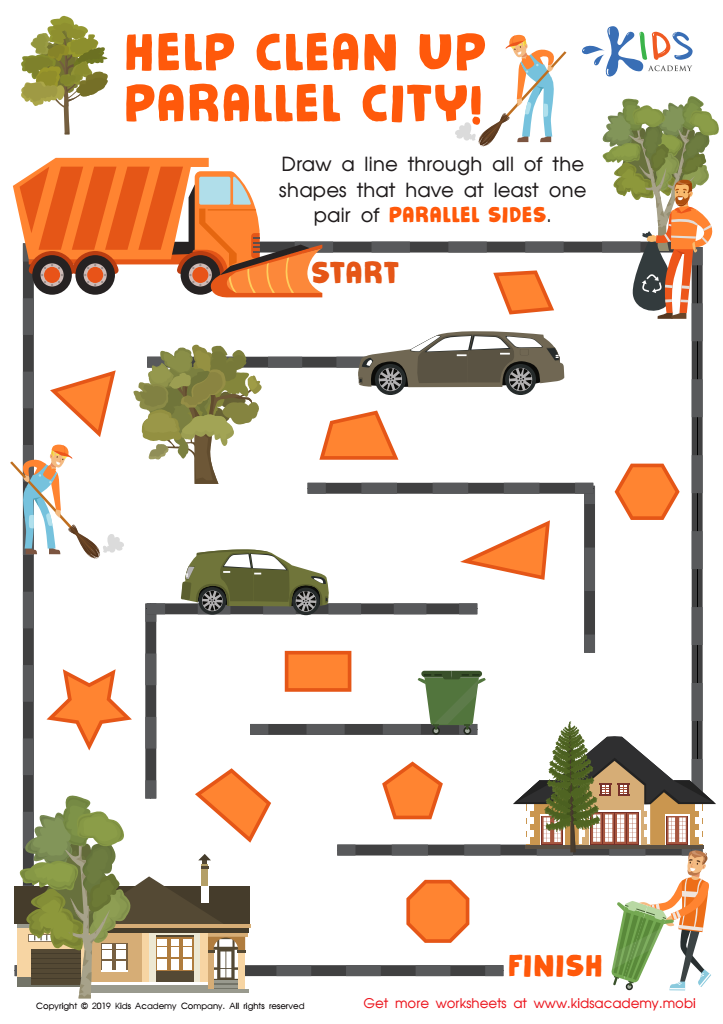Improving concentration Geometry Worksheets for Ages 4-9
4 filtered results
-
From - To
Boost your child's focus and geometry skills with our specially designed Improving Concentration Geometry Worksheets for Ages 4-9. These engaging activities feature vibrant illustrations and interactive challenges that capture your child's interest while developing their concentration. From identifying shapes to solving puzzles, every worksheet is crafted to enhance spatial awareness and critical thinking. Perfect for both classroom use and at-home practice, our printable worksheets make learning geometry fun and effective. Give your child the tools they need to succeed in math with our expertly created educational resources. Visit us today and transform learning into an exciting adventure!


Geometry Worksheet


Robot Fun Worksheet


Find the Last! Worksheet


Help Clean Up Parallel City Worksheet
Improving concentration in geometry for ages 4-9 is crucial because it lays the foundation for essential cognitive and academic skills. At this young age, children are highly receptive and their brains are rapidly developing. Geometry, with its focus on shapes, sizes, and spatial relationships, enhances their spatial awareness, problem-solving, and critical thinking skills. By fostering concentration in geometry, parents and teachers help children develop attention to detail, an essential skill for all future learning endeavors.
Concentration in geometry activities, like puzzles and shape-based games, aids in the improvement of fine motor skills and hand-eye coordination. Young children learn to focus on specific tasks, which increases their overall ability to concentrate in other subjects like reading and math. Furthermore, a strong grasp of geometric principles at an early age promotes early numeracy, as geometry concepts are closely linked to understanding numbers and arithmetic operations.
On a broader scale, encouraging children to focus on geometry nurtures a healthy learning attitude and builds confidence. A child who can concentrate and successfully solve geometric problems may feel more confident tackling other challenging subjects. Therefore, investing time and effort in improving concentration in geometry during these formative years sets the stage for sustained academic achievement and cognitive development, benefiting the child throughout their educational journey.
 Assign to My Students
Assign to My Students





















